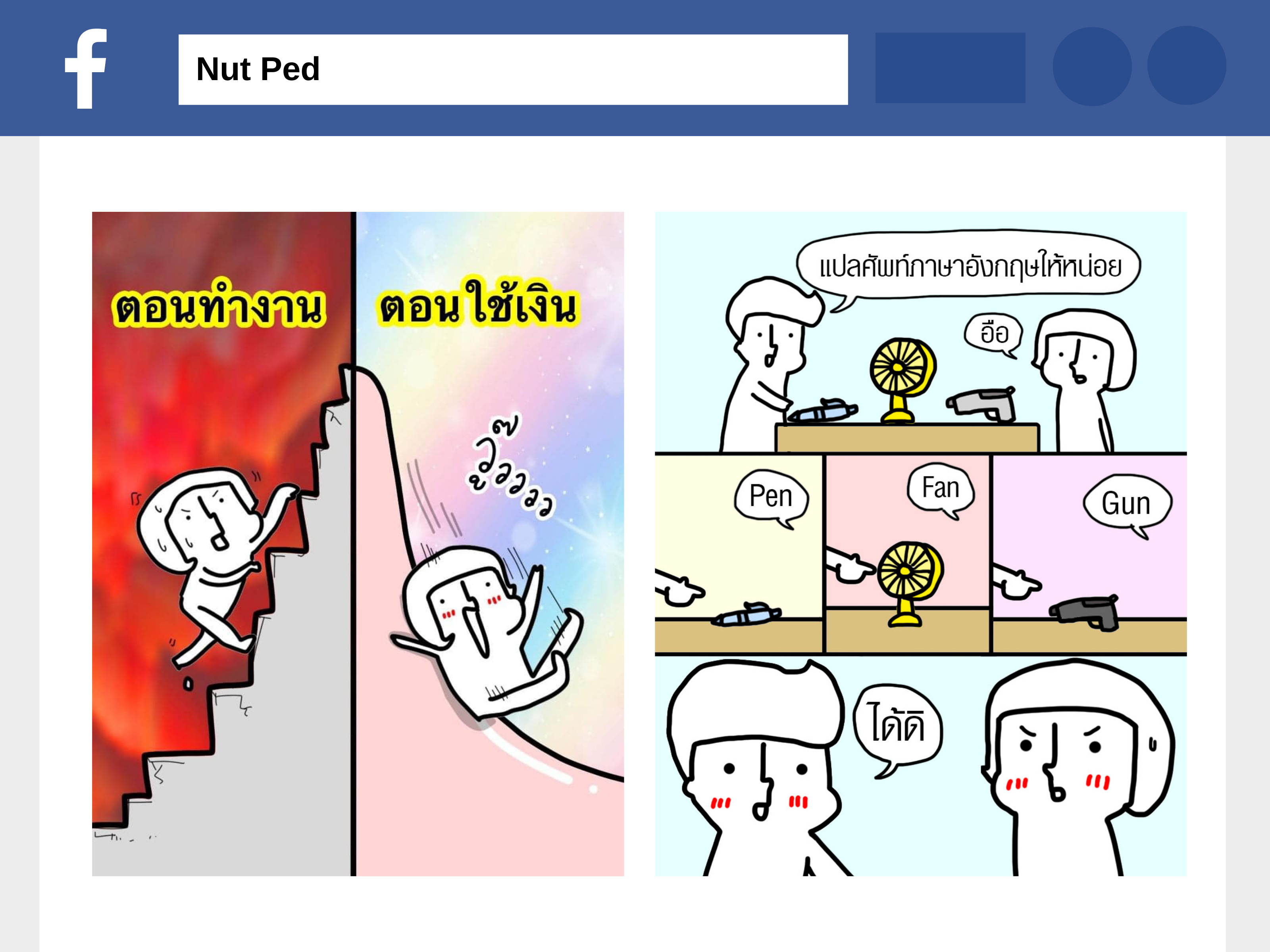Humor in Nut Ped Facebook Fanpage: Linguistic Strategies and the Function of Humor
Main Article Content
Abstract
Objectives: The objective of this study was to study linguistic strategies for conveying humor on the Nut Ped Facebook Fanpage. and the function of language strategies that convey humor in the Nut Ped Facebook fan page
Methods: The data were collected From Nut Ped Facebook Fanpage in the first half of 2023, from January 1, 2023, to June 30, 2023, with only posts that are complete in a single episode or post selected. If any posts have duplicate content, they will be analyzed only once. A total of 211 posts appeared to convey humor.
Results: It was found that the linguistics strategies that convey humor can be divided into two types: (1) Verbal language strategies including the use of spoonerism, puns, homophones, hyperbole, verbal irony, unexpected utterances, and unconventional metaphors and (2) Non-verbal language strategies including the use of visual metaphors and exaggerate images. As for the function of humor that is expressed on Fanpage Facebook, there are two functions: humor helps create enjoyment, and humor is a tool to reflect society.
Application of this study: This study is useful for studying the relationship between language and culture and can be used in the approach study of language used to convey humor and functions of humor in other online media continuously.
Downloads
Article Details

This work is licensed under a Creative Commons Attribution-NonCommercial-NoDerivatives 4.0 International License.
References
Bal, D. (2023). Visual Metaphor — Definition & Examples of Metaphors in Art. Retrieved October 1, 2023, from https://tutors.com/lesson/visual-metaphor-definitionexamples?fbclid=IwAR0gVWxUdsspxnywp6PhJVMkWmHIxn7VWT3MqxHUMEcNrx9oqGykYAh_nk.
Critchley, S. (2002). On Humour. London: Routledge.
Intharasilp, S. (2021). Strategies Creating Humour in Pinda Phosaya’s Written Pieces. Journal of Modern Learning Development, 6(2), 332-343.
Kemp, S. (2023). Digital 2023: Thailand. Retrieved October 1, 2023, from https://datareportal.com/reports/digital-2023-thailand. (In Thai)
Office of the National Digital Economy and Society Commission. (2023). Thailand Digital Outlook 2023. Bangkok: Office of the National Digital Economy and Society Commission. (In Thai)
Panpothong, N. (2013). Linguistically Oriented CDA: Concepts and their Application to Study of Thai Discourse. Bangkok: Faculty of Arts, Chulalongkorn University, Thailand. (In Thai)
Phakdeephasuk, S. (2006). Humor in Thai Politic Cartoon. Journal of Thai Language and Literature, 23, 86-143. (In Thai)
Phanthakerngamorn, T. (2016). Humor in Nonfiction Writing: Constructive Critical Analysis. Bangkok: Chulalongkorn University Press. (In Thai)
Ross, A. (1998). The Language of Humor. London: Routledge.
Sanguanpong, S. (2021). THE HUMOR IN TOEY-TIEW-THAI. An Independent Study Submitted in Partial Fulfillment of the Requirements for Master of Arts (Thai for Career Development). Silpakorn University. (In Thai)
Seetajun, T. and Others. (2021). Linguistic Strategies for Expressing Humor in the Program “Tamjaitood”. Journal of Liberal Arts, 21(2), 274-298. (In Thai)
Shinepreesha, P. (2021). The Strategies of Creating Humor of “NANG FANG MOOK” Facebook fan page. Master Dissertation, M.A. in Thai for Career Development, Silpakorn University, Thailand. (In Thai)
The Royal Institute. (2013). The Royal Institute Dictionary B.E. 2554 (Commemorating the auspicious occasion of His Majesty the King’s 7th Cycle Birthday Anniversary). Bangkok: The Royal Institute. (In Thai)


